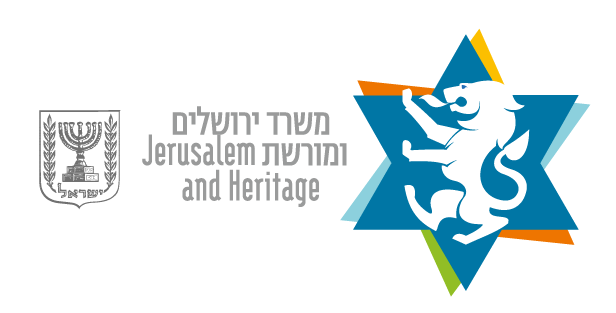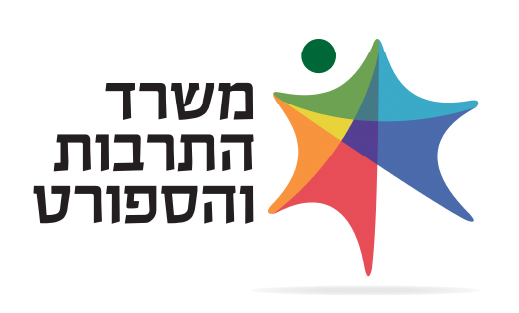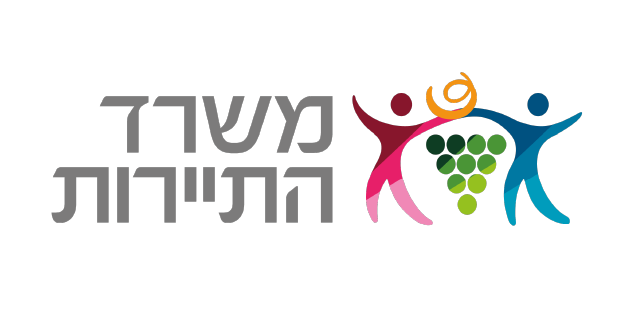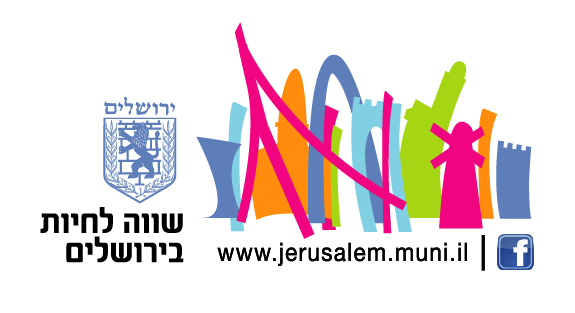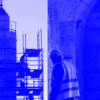Digital Stories

The New Tower of David Jerusalem Museum
In June 2023, we opened our gates to the public as the new Tower of David Jerusalem Museum, following a comprehensive renovation and renewal project costing over $50 million that took a decade in planning and three years of construction
The renewal and conservation of the Tower of David Jerusalem Museum was led by Dame Vivien Duffield through the Clore Israel Foundation together with the support of the Municipality of Jerusalem, the Ministry of Jerusalem and Jewish Tradition, the Ministry of Heritage, the Ministry of Tourism, the Patrick and Lina Drahi Foundation, Keren Hayesod, The Jerusalem Foundation, the American Friends of Museums in Israel and the P Austin Family Foundation.
The renovation included the preservation of the ancient citadel, restoration of the minaret, revitalization of the archaeological garden, the establishment of a new sunken multi-level entrance pavilion, a shop, and a café, infrastructure upgrades, the unveiling of additional archaeological excavations, improving accessibility within the citadel, and the introduction of a new permanent exhibition in 10 galleries. These galleries incorporate innovative technology, interactive displays, archaeological findings, and ancient artifacts.
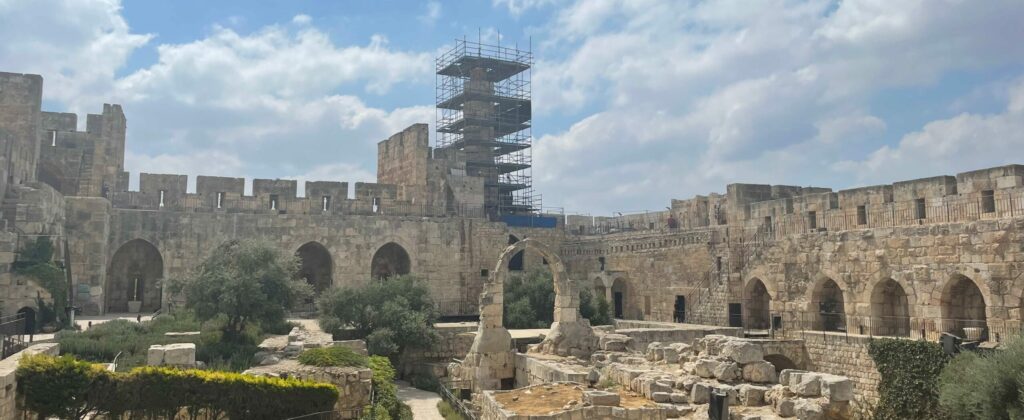
New Entrance Pavilion
The Tower of David stands at a crossroad, where old and new intersect. Visitors and tourists pass through here on their way to the Old City on one side and the nearby shopping center on the other. The audience is broad and diverse, cultures converge, and languages mix. The new entrance to the museum, currently being built in the western courtyard of the citadel, will enhance the experience for those arriving from the west. The Tower of David citadel, located between the old and new city, layered with nearly 3,000 years of history, is uniquely placed to tell the story of Jerusalem, a city that has no equal in the world. With its new visitor flow – from the Jaffa Gate entrance pavilion through the galleries, the Phasael Tower observation point and exiting into the Old City – the Tower of David Jerusalem Museum becomes the gateway to the exploration of Jerusalem. Integral to the museum’s new concept, this allows visitors to first better understand Jerusalem’s history through its new exhibition and provides food for thought to contemplate the complex reality of the Old City before entering its streets and alleyways.
The upgraded entrance square will include a ticket booth and a café, creating a new impressive public space. It will provide direct access to Jaffa Gate and Mamilla Avenue, as well as a pleasant, shaded area before entering the Old City for groups, tourists, and travelers.
The New Permanent Exhibition
The new permanent exhibition at the Tower of David Jerusalem Museum offers visitors an opportunity to journey to the center of the world, following the sacred city for the three religions: Judaism, Christianity, and Islam. The exhibition consists of ten galleries that combine archaeological findings, documents, and artworks with innovative interactive stations, video art, and specially produced films.
In the new permanent exhibition, we will discover the city that the great empires from the west and east sought to dominate for nearly 4,000 years. We will get to know the real Jerusalem, next to the symbolic Jerusalem representing the eternal connection between God and humanity. We will celebrate Jerusalem as a meeting point between religions and cultures through the annual holidays of the three religions, presented in a unique cinematic-animated format created by the illustrator David Polonsky. We will catch a glimpse of the city from a bird’s-eye view through a beautiful 19th-century model that sheds light on a unique moment in time; when the city of Jerusalem burst beyond the Old City walls. We will uncover the story of the Tower of David Citadel as a symbol and microcosm of the city’s history, and we will present the collection of artifacts found within the citadel, along with postcards and posters inspired by it. Finally, we ascend to the Phasael Tower, the most breathtaking viewpoint in the city, offering a 360-degree panoramic view that encompasses the past, present, and future of the city. Two additional galleries for rotating exhibitions on contemporary topics complete the picture, and the story of Jerusalem unfolds before the eyes of visitors as a rich and diverse experience. Notable artists have joined in the collaborative creation, including filmmaker Ari Folman, who designed the entrance installation for the new exhibition.
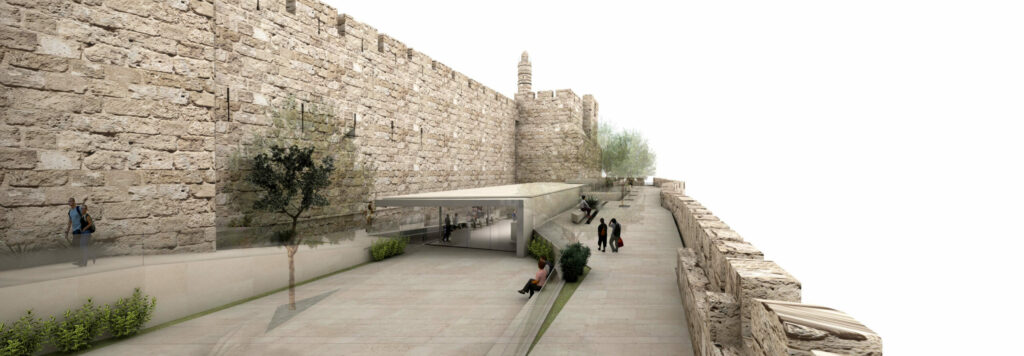
Accessible for All
We believe that everyone has the right to enjoy a visit to the museum on equal terms, and we made every effort to be as accessible as possible. Despite the challenging location of the museum within an ancient citadel with remnants from various archaeological periods, we have placed great importance on accessibility for the activities and projects we undertake on-site.
In recent years, we have conducted tours for the blind and visually impaired, established a guide training course for visitors with cognitive disabilities, provided audio description for the Night Spectacular for vision impaired visitors through audio-description headphones, organized leisure activities for special needs families and adults, and initiated the “Relaxed Spectacular” a monthly evening performance that combines accessibility for adults and children with special needs. In addition, we established the Jerusalem Museum Forum on Accessibility, which has since become a national forum under the auspices of the Museum Association. With the renewed opening of the museum, additional accessibility measures will be added, such as making the nighttime performances accessible for the hearing impaired, implementing a sensory map, and providing accessible tours for wheelchair users outside the citadel boundaries.
The observation from the Phasael Tower cannot be physically accessible due to the preservation of the tower. However, we have made every effort here as well, and visitors who are not able to ascend the final 50 steps will be able to experience and explore the view using VR goggles or 360-degree photography. Furthermore, we will soon introduce two additional channels to the museum’s audio guide: an audio description channel for the blind and visually impaired and a “visual guide” in Israeli and international sign language for the deaf.
-
![סיורים מצולמים]()
-
![]()
Secrets from the Editing Room Floor: Behind the Scenes of the Renovation Process
Watch
Follow our progress


